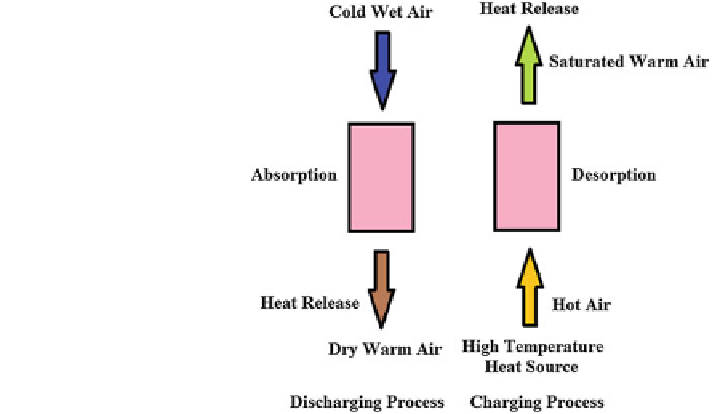Civil Engineering Reference
In-Depth Information
Fig. 10 Operation principle
of open adsorption system
content (humidity) present in the air is captured by the dry zeolite through the
adsorption phenomenon.
At the same time, the zeolite discharges the stored heat energy to the flowing air
stream, which in turn preheats the incoming ambient ventilation (or fresh) air
stream. The honeycomb-like structure of the system design ensures acquiring
improved adsorption or reaction kinetics and reduced pressure losses across the
process length.
One major limitation of this system for practical realization is that the solar heat
energy available at very high temperature in fact elevates the desorption tem-
perature of the system. This in turn has a direct effect on the overall system
performance and in the integration of the high-grade solar heat energy with this
system.
The other form of open adsorption system that was studied by the ZAE Bayern
(Center for Applied Energy Research) in Germany is not specifically meant for
long-term seasonal TES applications, but can be considered to cater as a buffer or
cushioning system in a district heating network dedicated for building heating
applications (N'Tsoukpoe et al.
2009
). This system is intended to store 1,300 kWh
of energy for providing heating to a school building up to 14 h and with 130 kW of
maximum power.
The charging of this system is usually performed during the off-peak load
conditions through the district heating network and is almost independent of its
operating criteria from the network, throughout the entire on-peak heating load
conditions in buildings. The operating principle is very similar to the ITW
Monosorp system operation, but with the difference in the heat energy source
supply and the adsorbent used (herein, it is with district heating network and with
zeolite 13X).

